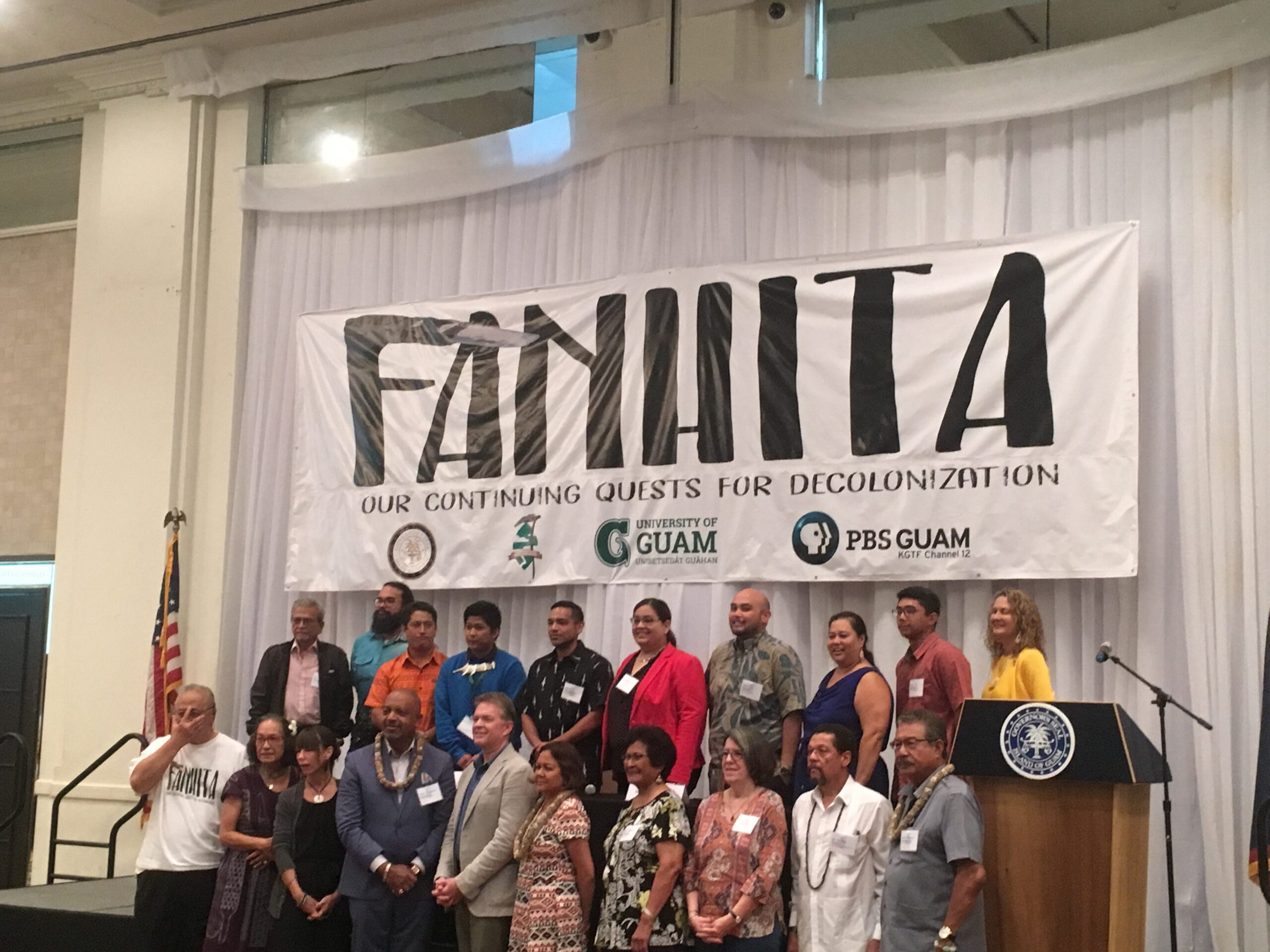Upcoming Conference
Check back for information about our upcoming gathering on decolonization activism in Guåhan and Hawai’i. We hope to convene scholars and community leaders to discuss movement histories and strategies for solidarity in Spring 2022!
Educational Materials
Check back for K-12 educational resources on the role of Indigenous and non-Indigenous community members in decolonization activism in Guåhan and Hawai’i!
Community Engagement Coming Soon
Check back to see updates on the progress of Kevin Escudero’s “born digital” book manuscript, Imperial Unsettling: Indigenous and Immigrant Activism towards Collective Liberation. View the announcement by Brown Digital Publications Initiative folks.
Learn How Indigenous Communities Continue to Contest Imperial Rule Today
Oceania is a region in which many Indigenous communities were and continue to be subjected to American, British, French, Spanish, German, and Japanese colonial rule, and at times, the rule of multiple imperial regimes (Matsuda 2012). As part of the empire building project, particularly in the U.S. context, the expansion of the military’s reach has been part and parcel of the colonial process (Nebolon 2017; Shigematsu and Camacho 2010; Lutz 2009; Sand et. al. 2016; Vine 2009, 2020). Indigenous communities have contested these forms of imperial rule and continue to do so today (Mar 2016; Na’puti and Bevacqua 2015; Na’puti and Rohrer 2017; Shigematsu and Camacho 2010). This activism has also been supported by members of the region’s non-Indigenous communities as seen in the efforts of groups such as Filipinos for Guåhan and the Fanohge Coalition in Guåhan and activist scholars writing about Asian settler colonialism in Hawai’i.


Decolonization Activism in Guåhan
Guåhan is the southernmost island in the Mariana Islands chain located in the Pacific Ocean, due east from the Philippines, and home to the Indigenous CHamoru people. The U.S. government gained control of the island in 1898, following the signing of the Treaty of Paris, which ended the Spanish-American War. Previously, Spain had colonized Guåhan and the Northern Mariana Islands for over two hundred years (Rogers 2011). During both the Spanish and U.S. colonial periods, CHamoru organizers fought (and continue to fight) for sovereignty and self-determination. As a U.S. territory and strategic military outpost in the Pacific Ocean, the island was administered by the U.S. Navy from 1898 through the mid-twentieth century, when CHamoru activists successfully advocated for and secured the implementation of a civil government (Perez Hattori 1995). In the 1970s, this newly formed civil government established the First and Second Political Status Commissions to delve further into the question of the island’s political status (Tolentino 2019). In the 1980s, the Guåhan government created the Commission on Self-Determination to take up the initial questions explored by the previous Political Status Commissions (Ibid). More recently, in 1997, the Guåhan legislature formed the Commission on Decolonization, consisting of three task forces dedicated to examining the potential for independence, statehood, and free association respectively (Ibid). The Commission specifically sought to inform and better understand the perspectives of Guåhan’s Indigenous people regarding the island’s previous, current, and potential future political relationship with the United States.
Guåhan and Hawaiʻi
As another U.S. territorial possession and Pacific Island homeland, Hawaiʻi is a useful comparative and relational site of study and solidarity for this project. The relative invisibility of Guåhan in the U.S. popular imagination may be contrasted with the hypervisibility of Hawaiʻi. At the same time, both were formally forcibly incorporated into the United States in 1898 and transformed thereafter by Asian settler labor and intense militarization. Conversations among scholar activists working in Guåhan and Hawaiʻi can help us all work through complex relationships between different communities of color living in Indigenous lands occupied by settler states and better understand the incommensurabilities and potentials of decolonization work.
Decolonization Activism in Hawaiʻi
Kānaka ʻŌiwi (Native Hawaiians’) movements for decolonization are informed by competing conceptions of Hawaiʻi as a paradisiacal tourist destination and a model of multiracial harmony on one hand, and as an occupied independent monarchy and extension of the U.S. settler colonial nation state on the other. Flashpoints in the history of U.S. settler domination of Kānaka ʻŌiwi lands and social relations include the arrival of New England missionaries in the 1820s, the transformation of ʻŌiwi homelands into sugar and pineapple plantation profits in the 1880s, the annexation and overthrow of the Hawaiian Kingdom by in the 1890s, the intense militarization of the island’s lands throughout the long 20th century, and even the Japanese-led “Democratic Revolution” and attainment of US statehood in the 1950s and 1960s. In each of these eras, Kānaka ʻŌiwi contest assertions of settler power through varying forms of “aloha ʻāina,” roughly translating to “love of (home)land” in environmental, spiritual, political/patriotic senses and more. By reforming ʻŌiwi social relations and negotiating with settlers to mitigate outright violences, by putting their bodies on the line to prevent the desecration of sacred sites, by continuing to live in interdependent relations with the land and lāhui (nation, people), Kānaka strive to enact aloha ʻāina and navigate the treacherous waters of settler colonialism, racism, militarism, and heteropatriarchy.





